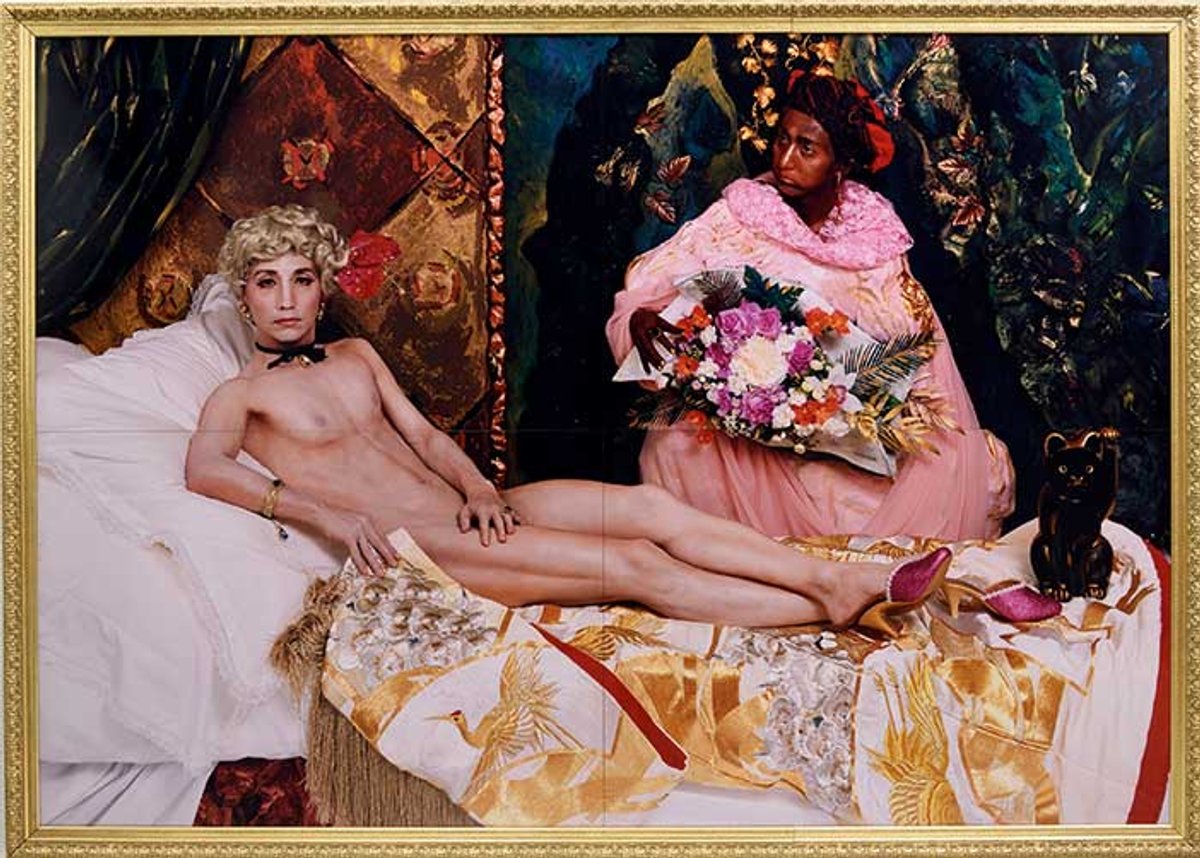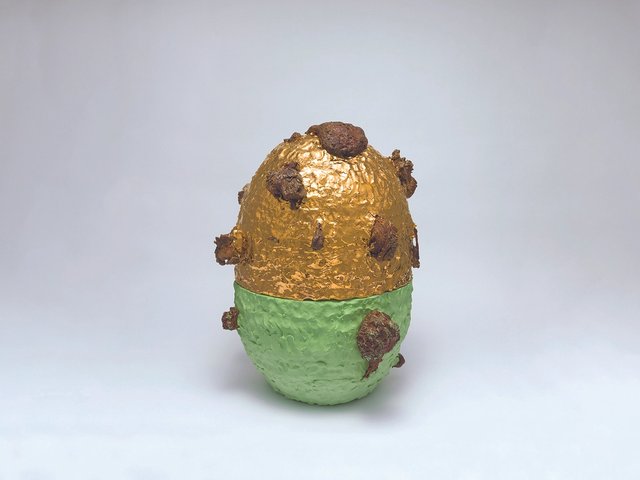Framed between two decisive historical thresholds—the death of Emperor Hirohito in 1989 and the 2011 Tohoku earthquake, tsunami and Fukushima nuclear disaster—Prism of the Real: Making Art in Japan 1989-2010 re-examines two transformative decades in Japanese art. The exhibition challenges the idea of “Japan” as a fixed national entity, instead situating artistic practice within the fluid global exchanges of late capitalism.
The show begins with the artists who participated in major group exhibitions in the US and Europe—notably Against Nature: Japanese Art in the Eighties (1989-91) as well as the Venice Biennale—who were propelled into the global arena while exposing perceived contradictions between tradition and advanced technology.
One of the first works one encounters is Yasumasa Morimura’s Portrait (Futago) (1989), a landmark appropriation of Manet’s Olympia (1863). By substituting Olympia with his own visage, Morimura challenges gendered and racial hierarchies while directly confronting the Western gaze. Further, by inserting his face in the Black maid figure, the artist invokes Japan’s own colonial history, casting the work as both critique and mirror of ambivalent cultural identity in the atomic age.
Tadasu Takamine’s God Bless America (2002) extends this interrogation of power: a stop-motion animation of President George W. Bush’s clay head, repeatedly moulded and destroyed as it sings the US national anthem. Produced in the wake of 9/11 and just ahead of the Iraq War, the piece exemplifies the exhibition’s sharpest theme: how artists recalibrated cultural influence and global hierarchies through irony and parody.
The intellectual terrain of this era was profoundly shaped by postmodernist strategies that at once absorbed and deviated from Western models. The show reveals how many artists associated with the “post-medium” condition of relational aesthetics had also participated in artist residencies in Japan—such as Pierre Huyghe, Dominique Gonzalez-Foerster, Rirkrit Tiravanija and David Hammons. Especially poignant are the new genres and collaborative media projects such as Huyghe and Phillippe Parreno’s No Ghost Just a Shell (1999) that destabilised notions of subjectivity through strategies of erasure amid the rise of online anonymity, in the aftermath of the 1995 great Hanshin-Awaji earthquake and Tokyo subway sarin gas attacks.
The exhibition’s historical arc is anchored by deeply quotidian and allegorical works of human connection amid survival. Lieko Shiga’s intimate, hallucinatory photographic series Rasen Kaigan (2009-12) documents families in the Tohoku region based on local myths that generate a heightened sense of hyperreality. Shimabuku’s near-impossible challenge of taking an octopus on a tour of Tokyo in 2000, and showing its documentation to itinerant Brazilian minstrel singers who regard him as a fisherman, reflects his philosophical aim for “misunderstanding in a beautiful way”. This openness to creative misunderstandings underscores the central premise of Prism of the Real: that Japanese contemporary art of this period must be understood not in isolation, but as a vital participant in the transnational reconfigurations of history, identity and community.
• Prism of the Real: Making Art in Japan 1989-2010, National Art Center, Tokyo, until 8 December






